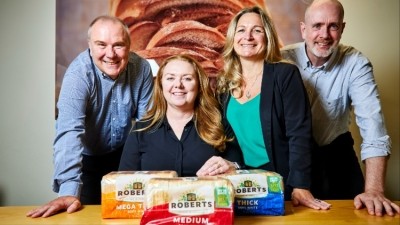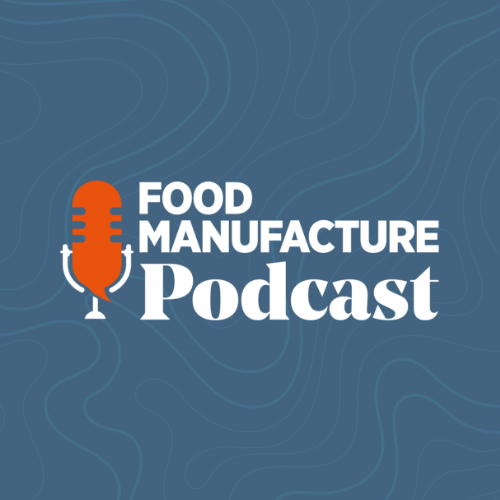Feature
Bakery manufacturing trends and insights October 2024

Consumers crave bold colours and exciting flavours from their favourite baked treats, but changing attitudes around health and wellness, and limited access to certain ingredients is keeping manufacturers on the back heel trying to keep up with trends.
Chocolate flavours have been a longstanding favourite among consumers, but sourcing of cocoa has become more and more difficult in recent years.
“Finished product costs for sweet bakery items containing chocolate has presented challenges in the sector during the last year as cocoa prices are likely to spike again in 2025,” Dawn Foods marketing lead for West EU & AMEAP Jacqui Passmore commented.
“Dawn is certainly seeing customers exploring ways to cut back or reduce costs relating to products that feature a large amount of cocoa or chocolate. It will be interesting to see how this impacts on the type of new sweet bakery launches into 2025, as bakers look at alternatives to chocolate such as using compounds, flavours, coatings, icings and sugar-based decorations to maintain the wow factor and indulgence that chocolate brings.”
This could mean that bakers explore alternatives to chocolate flavours in their sweet baked goods and perhaps settle on more fruit-based options – emerging flavours such as yuzu, pomelo and dragon fruit come to mind. Interestingly, the cost of vanilla has started to come down, which could spark a revived interest in custard or cream fillings.
“Some manufacturers are exploring alternatives to cocoa, although this will not either be suitable or preferable for many bakery products,” said Baker & Baker UK R&D director Jonathan Adams. “Longer term, there is the potential for lab grown ingredients to replace naturally grown cocoa, but cost-effective solutions in large quantities are not yet readily available.
“Baker & Baker is also investing in solutions to help safeguard future raw material sourcing. We are providing financial support for a water stewardship project in Eastern England, in conjunction with WRAP, which is also a key sourcing region for several of our ingredients.”
Plus, as demand for plant-based products continues to grow, this will naturally impact on toppings and fillings, which will also need to incorporate plant-based and vegan alternative ingredients.
“Younger generations, in particular, are driving the trend towards new or novelty flavours. 63% of consumers said they would be more likely to make a purchase if a product featured an innovative flavour,” added chief executive of ACI GroupKarsten Smet.
Legislative limitations
Uncertainty around legislative changes further complicate the landscape. The UK Government has already hinted at revisiting certain aspects of the Brexit deal which could impact the imports and exports of essential ingredients like flour, while the restriction on ‘junk food’ advertising on TV and online will place further limitations on bakers.
Tailored solutions for bakery success
Dawn Foods’ bakery ingredients include best-in-class mixes, bases, icings, glazes and fillings, as well as innovative market-driven solutions for vegan, gluten-free, longer shelf life, and reduced sugar and fat.
We’re on the pulse of trends in today’s fast moving bakery sector and partner with food manufacturers to create customised finished products that excite the taste buds and are a feast for the eyes.
Our chefs and experienced bakery technical teams work with you, not just on NPD but in creating efficiencies in operations or reworking existing applications to meet specific production requirements and improving profitability.
As well as creative sweet bakery solutions, Dawn offers the support you expect and more from a global ingredients supplier. Our diverse production sites and ingredients are covered by IFS, GFSI, BRC, Halal, Kosher, Vegan certification schemes. And our dedicated regulatory teams mean manufacturers can ensure all products are compliant as well as being fully traceable throughout the supply chain.
Despite these limitations, bakers shouldn’t be turning away from producing sweet treats for consumers. Health may be high on the agenda for many shoppers, but this also goes hand in hand with wellness –a healthy, happy mind just as much as it requires a healthy body.
While there continues to be an interest in oversized, overloaded and visually incredible cakes, concerns about sugar remain on the menu and they are having an impact on the kinds of sweet treats bakers are adding to their ranges.
“Smaller sized cakes and mini formats offer consumers the indulgence they are seeking but with limited calories per serving so ensuring that there is no compromise on taste due to sugar or fat reduction,” said Passmore.
“Indeed, Dawn’s global survey identified ‘Daily Delights’ as a key trend in cake consumption. As we place a stronger emphasis on mental health and wellness, consumers have increasingly changed their perceptions of sweet goods. So, enjoying something sweet every day has gone from ‘something I feel guilty about’ to ‘something that makes me feel good’.
“Certainly, in terms of Dawn’s NPD we are seeing a reduction in sugar and calories and interest in individual serving size and mini-format cakes as higher priority for customers in the bakery manufacturing channel.”
Good in and out
Across the wider bakery category, there’s been a growing trend of consumers looking for products that are as good on the inside as they are on the outside – baked goods that look great but are also packed with nutrition. According to Smet this means functional ingredients and additives like fibre, protein, and pre- and post-biotics will continue to grow in prominence.
“These innovative ingredients will also enable bakers to differentiate themselves in the marketplace, which gives consumers something else to think about other than price,” she added. “Instead, this approach can get them thinking about value and quality, which may encourage them to spend a little more for a better quality – and ultimately better value – product.”
ACI identified a clear generational split within the trend. While Gen Z and Millennial consumers were more likely to appreciate innovative products that incorporate plant-based or alternative grain ingredients, Gen X and baby boomers focused more on tradition and quality.
“Baby boomers in particular are more likely to make purchasing decisions based on their health, making low-salt and sugar options more appealing to them,” Smet explained. “At the same time, consumers across generations also expect products that look exceptional, with the artisanal bakery sector expected to go through a period of exciting growth in the next five years.
For the ‘Gram
Of course, social media is an almost unavoidable part of our lives and the constant drive for engagement has warped the way that many interact with food. In this social media age, visually appealing, creative, and custom products are a great way to generate viral engagement from consumers.
“Over three quarters of consumers have bought products seen in social media posts, which opens up many opportunities for creative bakers to turn their customers into viral marketing advocates,” Smet continued. “The ‘everything is cake’ trend really crystallised just how enthusiastic consumers can get about impressive baked goods – and it also means that consumers are now less willing to accept products that don’t have an element of visual flair about them.”
The influence of social media on the bakery market has manifested itself in a number of ways. Smaller, artisanal bakers may be the first to jump on to the trends appearing on Tik Tok and Instagram, but this soon travels back to the manufacturers whose job it is to make them available to the wider population.
“Young bakers are driving trends, and the awareness and ability to get the social media management, content creators and macro and micro influencers right is now critical for bakeries, particularly those in the artisanal space,” said Adams.
“Artisan bakeries have made a clear push on quality in the marketplace. This is a challenge for big box retail that prioritise quality with ease of operation. If a more premium product is at the heart of what new entrants to the bakery category want, then quality has to be the currency for success.”
As Adams explained, flavour combinations and new product concepts that start out in the artisanal bakery sphere gain traction and awareness via social media, creating the potential to be adopted within mainstream bakery.
“Examples include the wider use of pistachio and Japanese and South East Asian inspirations bringing vibrant matcha greens and purple ube [purple yam], but also new flavours like Miso and Umami,” he concluded.
Tracking the source
No matter how adventurous consumers may become, there still an overwhelming need for manufacturers to be able to be transparent on how they source their materials. In Puratos’s recent Taste of Tomorrow survey, 58% of respondents said that they wanted to know where their food comes from and how it is made.
“Locally-grown ingredients are a priority – 71% think local is better for the environment, while half of shoppers believe such products are healthier,” said Dr Morgaine Gaye. “However, only a quarter of people currently buy food with locally-made ingredients on a weekly basis. There is also growing appreciation for products that are made by hand as conscious consumers look for elements of realness, imperfection and nature in their purchases.”
Gaye also highlighted the potential for secondary revenue streams through utilising waste or upcycling, for example using mussel shell glass or orange peel in fabrics, and food waste in 3D printing.
So, what does this mean for manufacturers? It's critical they pay attention to the trends coming out of the smaller artisan bakers and leverage their experience and reach within the sector in a way that only a larger producer can do. Shortages of certain ingredients should be seen as an opportunity to branch out and explore new emerging trends – it's all in your reach when the possibilities are endless.


















